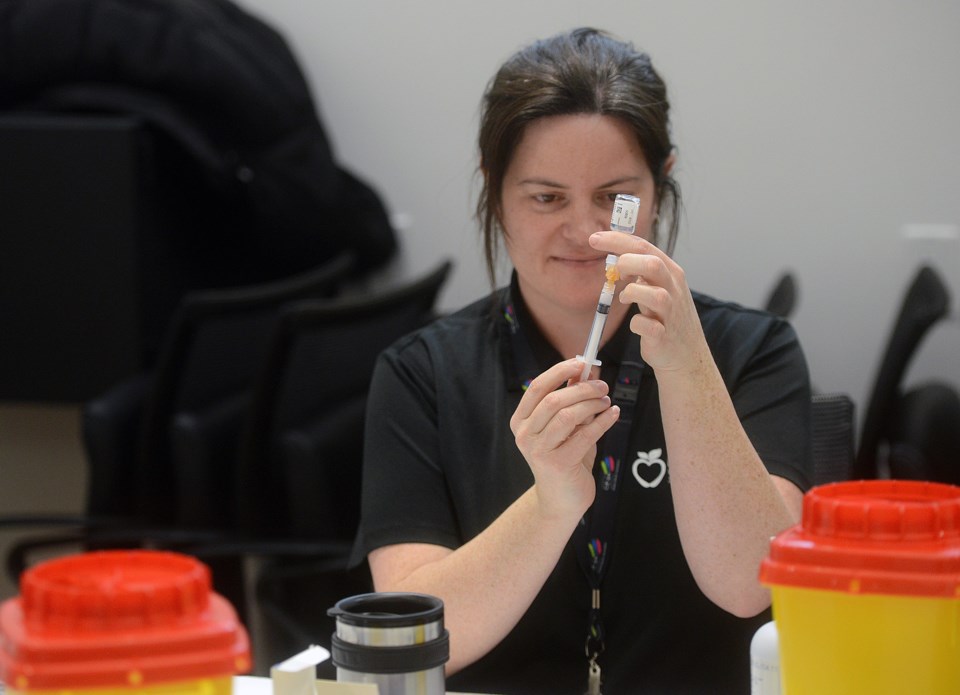Faced with uncertainty over what will become of York Region Public Health after the Ford government merges Ontario’s 35 public health units into 10, York Region’s medical officer of health said there’s little doubt the provincial funding cuts will curtail the services and programs it provides to residents.
Already, the local public health unit anticipates a $4.1M shortfall this year after it learned that effective April 1, the Ontario government reduced its portion of the provincial-municipal cost-sharing program to 70 per cent, from 75 per cent, Dr. Karim Kurji said.
That means the Regional Municipality of York must now pay 30 per cent to deliver public health programs such as investigating infectious disease outbreaks and offering immunization clinics, inspecting food establishments, running breastfeeding clinics, and monitoring drinking water for safety.
That funding formula will see the Region picking up 40 per cent of all provincially cost-shared programs by 2021. For the public health unit, that means a declining budget by an estimated $11 million within two years. Its 2017 budget was $71 million.
“This, inevitably, will put a lot of pressure on the regional municipality in terms of finding the extra dollars and, inevitably, what that is accompanied by is us looking at any areas where we can potentially cut our services,” Dr. Kurji said.
For example, York Region’s 24 public health inspectors in 2018 conducted more than 10,000 food premises inspections across the region, Health Protection manager Ewilla Caastellan-Wong told NewmarketToday.
Inspections also took place at farmers markets, special events and mobile vendors such as catering trucks and hotdog carts to ensure safe food handling practices. Inspectors also visit many other public premises such as child care centres, personal service settings such as hair and nail salons, public pools and whirlpools.
“The problem is our services are mandated by the province and unless and until we have their permission with respect to cutting particular programs, we would not be able to do that,” Dr. Kurji added.
One of the programs that York’s public health division could eliminate is the region’s free vision-screening program for children under 19, Dr. Kurji said, since that service is provided through OHIP.
But still, there is too little information provided by the Ontario government to warrant anything other than speculation at this point, he noted.
On the subject of consolidating Ontario’s current 35 public health units to 10, Dr. Kurji said the only thing his agency was told was that Toronto’s boundaries will remain unchanged.
“The ideal for us would be that our geographical area remains the same as York Region’s because that is the way we have been organized, and we can maintain the relationships with our school boards and all of the community partners we deal with,” Dr. Kurji said. “However, if we were to expand into some bigger area, that is going to result in natural disruption for our staff and possible disruption in service delivery, as well. At this point, it’s not clear what the governance model is going to be.”
Dr. Kurji points to the various crises Ontario residents have been through over the years as evidence that a strong public health system makes good economic sense.
“When you think about Walkerton, the West Nile virus, and SARS. ... In the case of SARS, the economic cost to the province was $5 billion. Often, people forget that whatever we spend in public health is an investment in terms of saving dollars. $1 invested in tobacco prevention results in a $20 savings down the line for the health care system, and $1 invested in immunization results in $16 saved.”
The Ford government's April 11 budget states the following, under Modernizing Ontario Public Health Units:
The current structure of Ontario’s public health units does not allow for consistent service delivery, could be better coordinated with the broader system and better aligned with current government priorities.
This is why Ontario’s Government for the People is modernizing the way public health units are organized, allowing for a focus on Ontario’s residents, broader municipal engagement, more efficient service delivery, better alignment with the health care system, and more effective staff recruitment and retention to improve public health promotion and prevention.
As part of its vision for organizing Ontario public health, the government will, as first steps in 2019–20:
- Improve public health program and back-office efficiency and sustainability while providing consistent, high-quality services, be responsive to local circumstances and needs by adjusting provincial-municipal cost-sharing of public health funding and;
- Streamline the Ontario Agency for Health Protection and Promotion to enable greater flexibility with respect to non-critical standards based on community priorities.
The government will also:
- Establish 10 regional public health entities and 10 new regional boards of health with one common governance model by 2020–21;
- Modernize Ontario’s public health laboratory system by developing a regional strategy to create greater efficiencies across the system and reduce the number of laboratories and;
- Protect what matters most by ensuring public health agencies focus their efforts on providing better, more efficient front-line care by removing back-office inefficiencies through digitizing and streamlining processes.


